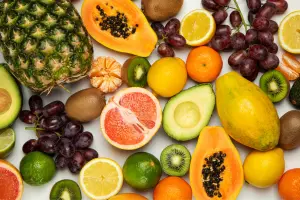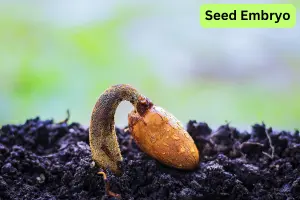What is Seed Viability? A Complete Guide for Gardeners and Beginners
Published: 19 Jan 2025
Hello, Seed Sowers! 🌾
Do some seeds sprout fast while others fail to grow? The answer lies in understanding seed viability—the ability of a seed to germinate and grow into a healthy plant. Think of seed viability as the “health” of a seed, determining whether it will grow or stay dormant. Gardeners, students, and beginners who want to plant and grow things successfully must understand this concept.
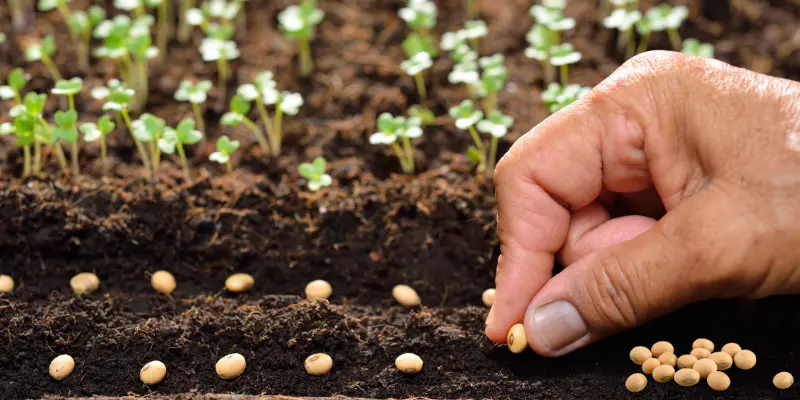
In this article, Sheila, a botany expert with seven years of research experience, shares practical insights into seed biology. By reading this article, you’ll better understand seed viability, factors affecting seed viability, signs of non-viable seeds, why seed viability matters for gardeners and beginners, a seed viability chart and a conclusion.
You’ll also discover simple ways to test seed viability and the best practices for ensuring healthy plant growth. Ready to plant smarter? Let’s explore!
What is Seed Viability?
Seed viability means a seed’s capacity to germinate and flourish. It’s not just about planting seeds but ensuring they have the potential to bring your garden to life.
Whether you’re growing vibrant flowers or fresh vegetables, viable seeds are the foundation of every gardener’s success.
The smallest seed of faith is better than the largest fruit of happiness.Henry David Thoreau
Understanding Seed Viability
Have you planted seeds that didn’t grow? The issue often lies in seed viability, which, like a fully charged battery, holds the energy for growth. From my experience, understanding seed viability is crucial for turning seeds into thriving plants.
Let’s uncover why it’s vital for successful gardening.
Importance in Gardening and Agriculture
Viability determines whether a seed is “alive” or capable of growth.
Gardening helps you avoid wasting time and resources on seeds that won’t germinate.
Agriculture ensures efficient crop production, directly impacting food supply and sustainability.
During my early gardening days, I learned that planting non-viable seeds leads to empty pots and disappointment. Now, I always test my seeds before planting.
The Role of Seed Viability in Successful Planting
Why does seed viability matter so much? Think of it this way: planting non-viable seeds is like trying to start a car with a dead battery—it won’t go anywhere.
Healthy seeds give the ideal foundation for strong, robust plants, resulting in colourful gardens and plenty of crops. Paying attention to seed viability can save time, energy, and effort while ensuring that your gardening efforts yield rewarding results.
Factors Affecting Seed Viability
Understanding seed viability parameters is like learning a flawless cake recipe—everything must be perfect. These environmental and genetic elements determine whether your seeds grow into healthy plants.
Let’s break it down step by step.
| Factors Affecting Seed Viability | Explanation | Personal Insights & Tips |
| Environmental Conditions | Temperature, humidity, and light play important roles. Extreme conditions, such as too hot, cold, wet, or dry, can reduce seed viability. | Store seeds in a cool, dark, and dry place. I’ve found this helps preserve their viability longer, much like controlling conditions in a greenhouse. |
| Seed Storage and Age | Over time, seeds lose their vigour. Improper storage, such as exposure to moisture or air, speeds up this decline. | Use airtight containers and store seeds in the fridge.I once planted three-year-old sprouted seeds because I kept them in ideal conditions! |
| Genetic Factors | Genetic traits determine germination potential. Some species have higher viability rates, while others may naturally struggle. | Hybrid seeds are bred for stronger germination, while heirloom seeds can vary. Know your seed type to set realistic expectations. |
How to Test Seed Viability?
Testing seed viability is like checking if a flashlight battery still works before heading on a hike. You want to ensure your seeds have the potential to grow before planting them.
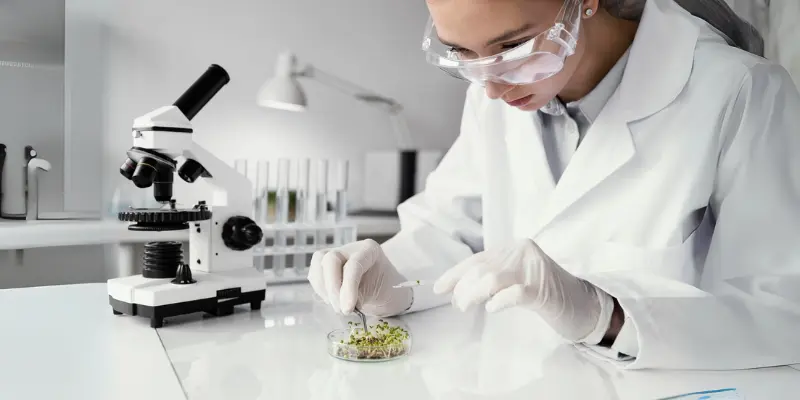
Let’s explore some simple methods and tools, including a seed viability chart, to help you get started.
Simple Viability Testing Methods
Testing seeds doesn’t need to be complicated. Here are three easy methods I’ve used to check viability:
- Water Test: Drop seeds into a bowl of water. Viable seeds usually sink, while non-viable ones float.
- Paper Towel Test: Place a few seeds on a damp paper towel, fold it, and keep it in a warm spot. Check after a few days for germination.
- Float Test: Similar to the water test, but beneficial for smaller seeds.
These methods are quick, reliable, and can save your time and effort in the long run. I often use the paper towel test to predict germination rates for my garden planning.
Signs of Non-Viable Seeds
Not all seeds are created equal. Some promise growth, while others fail before they even start. Identifying non-viable seeds can save time and effort in your gardening journey.
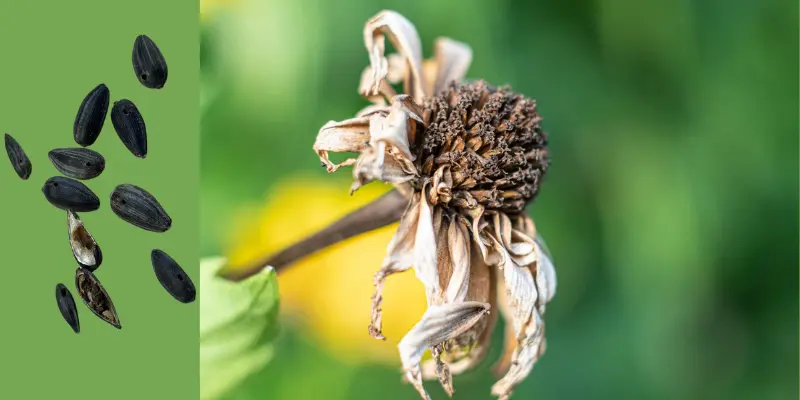
Let’s look at the telltale signs of poor seed viability and how to handle them effectively.
Common Indicators of Poor Seed Viability
- Non-viable seeds often show physical signs of deterioration. Wrinkling, cracks, or discolouration can indicate seeds that have lost their potential to grow.
- In my experience, seeds that feel unusually lightweight or brittle are often past their time. Imagine these seeds as an old flashlight—no matter how much you click the switch, they won’t light up because their inner energy is gone.
- Another key sign is the absence of germination when you test the seeds. A simple germination test can help confirm their condition. Remember, even seeds that look fine outside may no longer be viable if stored improperly or for too long.
How to Handle Low-Viability Seeds
When you encounter low-variable seeds, you have two options: discard them or try to restore them. In some cases, soaking seeds in water overnight can rehydrate them and give them a fighting chance.
However, if the seeds are severely damaged, it’s best to let them go and focus on healthier ones.
I once tried planting old seeds stored in a humid place. Despite my efforts to revive them, they didn’t germinate. Since then, I’ve learned the value of properly testing and storing seeds. Think of it like trying to bake with expired yeast—starting fresh for reliable results is better.
Why Seed Viability Matters for Gardeners and Beginners
Understanding seed viability is like having a roadmap for your gardening journey—it guides you toward success while saving time and effort. As a gardener, I’ve learned that starting with viable seeds can make all the difference between a thriving garden and a patch of disappointment.
A garden is a grand teacher. It teaches patience and careful watchfulness; it teaches industry and thrift; above all, it teaches entire trust.🌻✨Gertrude Jekyll
Let’s explore why this matters so much.
Avoiding Waste of Resources
Planting non-viable seeds is like pouring water into a leaky bucket—you’ll end up frustrated and empty-handed. That’s why testing seeds beforehand is so important; it saves time, money, and effort by ensuring you’re planting seeds with the potential to grow.
I learned this lesson the hard way when I started gardening—I spent weeks waiting for seeds to sprout, only to discover they weren’t viable. 😔🚫
Seed Viability Chart
A seed viability chart is like a gardener’s cheat sheet. It provides information about how long different seeds remain viable and the conditions they need for optimal storage.
Over the years, I’ve found these charts invaluable for planning my planting schedule and avoiding wasted seeds. Let’s explore how you can make the most of one.
How to Use a Seed Viability Chart
Using a seed viability chart is simple and practical. It shows the average lifespan of seeds for different plant types, helping you decide which seeds to prioritize. Think of it as checking an expiry date on food—fresh seeds perform better, just as fresh ingredients make a tastier dish.
I’ve learned to pair this chart with proper storage techniques, like keeping seeds in cool, dry places, to extend their viability. A glance at the chart before planting saves time and ensures a more productive garden.
Seed Viability for Different Plant Types
Not all seeds are created equal—some stay viable for years, while others lose their ability to germinate within a season. For example, tomato seeds can last up to five years, while lettuce seeds might only stay viable for one or two years.
By understanding and using a seed viability chart, you’ll make informed choices, save resources, and enjoy a more rewarding gardening experience.
| Seed Type | Typical Viability (Years) | Storage Recommendations | Additional Notes |
| Beans | 3-5 | Seal in airtight containers; refrigerate. | Begin testing germination after 3 years. |
| Tomatoes | 4-6 | Store in a cool, dry, and dark space. | Seeds may last longer but with reduced success. |
| Corn | 1-2 | Use vacuum-sealed bags in the fridge. | Seed germination declines sharply after 2 years. |
| Lettuce | 2-3 | Use vacuum-sealed bags in the fridge | Seal in airtight containers, refrigerate. |
| Peas | 3-5 | Maintain low humidity and cool temperatures. | Seal in airtight containers and refrigerate. |
When I plan my garden, I always check the chart to ensure I’m planting seeds with the best chance of success. This approach is constructive for beginners, giving them a clear guide to follow and preventing the frustration of planting non-viable seeds. 🌿✅
| Interesting Facts |
|---|
|
Conclusion 🌟
So, guys, it’s time to wrap up. We covered seed viability in this post. Its value for gardening is already well known. My advice is to keep seeds always cold and dry.
Save seeds in an environment to extend their lifespan, and don’t skip viability tests—they’re game-changers!
Ready to put this knowledge into action? Grab your seeds, test their viability, and start planting with confidence today!
FAQs ❓
These FAQs provide clear, beginner-friendly guidance to help readers better understand seed viability and its importance.
Seed viability refers to a seed’s ability to germinate and grow into a healthy plant. A viable seed has the energy needed to sprout under the right conditions. If a seed is not feasible, it won’t grow, even if you plant it properly.
To test seed viability, you can do a simple germination test by placing seeds between damp paper towels and waiting a few days. Count how many seeds sprout out of the batch. If most of the seeds germinate, they’re viable.
Seed viability is crucial because it determines whether your seeds will sprout and grow successfully. Using viable seeds increases the likelihood of a successful garden. Without viable seeds, you risk wasting time and resources on plants that won’t grow.
Seed lifespan varies by type. For example, tomato seeds can last 4–5 years, while lettuce seeds last about 1–2 years. Check a seed viability chart for specific guidelines on different plant types.
Yes, properly storing seeds can extend their viability. Please keep them in a cool, dry place and use airtight containers to protect them from moisture. Some gardeners even store seeds in the fridge for extra protection.
If a seed doesn’t germinate after testing or shows signs of mould, it is likely no longer viable. Old seeds that have been poorly stored may also lose their ability to grow. Regular testing will help you identify non-viable seeds.
It’s possible, but the older the seeds, the lower the chances of germination. If you have expired seeds, it’s worth testing them to see if they still have a chance of sprouting. Fresh seeds are always the best option for a healthy garden.
Seeds need the right environment—temperature, moisture, and light—to remain viable. Too much heat or humidity can cause seeds to lose viability, while cold and dry conditions help preserve them—store seeds in controlled conditions to maintain their germination ability.
Most seeds can be tested for viability using the germination method, but some tiny seeds or those with delicate structures may require special techniques. It’s always best to consult a specific guide for the type of seed you’re testing.
If your seeds don’t germinate, check for possible issues like poor seed quality or incorrect environmental conditions. You may also want to test other seeds from the same batch to see if the problem is widespread. If needed, consider purchasing new, fresh seeds for better results.

- Be Respectful
- Stay Relevant
- Stay Positive
- True Feedback
- Encourage Discussion
- Avoid Spamming
- No Fake News
- Don't Copy-Paste
- No Personal Attacks



- Be Respectful
- Stay Relevant
- Stay Positive
- True Feedback
- Encourage Discussion
- Avoid Spamming
- No Fake News
- Don't Copy-Paste
- No Personal Attacks
